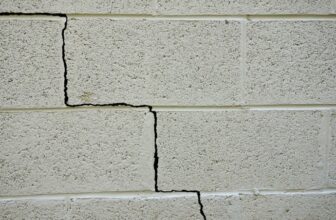
De-icing is a common practice used to remove ice and prevent the formation of ice on various surfaces, such as roads, sidewalks, and aircraft. While de-icing is essential for safety and mobility, traditional de-icing methods often involve the use of chemicals that can have negative impacts on the environment. However, there are eco-friendly alternatives and approaches that can be adopted to minimize the ecological footprint of de-icing processes. In this article, we will explore several eco-friendly ways to approach de-icing, providing you with valuable insights and practical solutions to mitigate the environmental impact of icy conditions.
Eco-Friendly Ways to Approach De-Icing
Understanding the Environmental Impact of Traditional De-Icing Methods
Before delving into eco-friendly de-icing alternatives, it’s important to understand the environmental impact of traditional de-icing methods. Chemical de-icers, such as sodium chloride and calcium chloride, are commonly used for de-icing purposes. While effective in melting ice, these chemicals can have detrimental effects on vegetation, aquatic ecosystems, and infrastructure.
1. Eco-Friendly De-Icing Agents
A viable eco-friendly alternative to traditional de-icing agents is the use of environmentally friendly de-icers. These de-icing agents are typically derived from natural or organic sources, making them safer for the environment. Examples of eco-friendly de-icing agents include beet juice, cornstarch, and potassium acetate. These substances are biodegradable and less harmful to vegetation and water sources.
2. Mechanical Removal Techniques
Mechanical removal techniques offer another eco-friendly approach to de-icing. Instead of relying solely on chemicals, mechanical methods involve physically removing ice using specialized equipment. Snowplows, scrapers, and brushes are commonly used to remove ice and snow from roads and walkways. By reducing the reliance on chemical de-icers, mechanical removal techniques help minimize environmental damage.
3. Anti-Icing Practices
One proactive approach to eco-friendly de-icing is anti-icing. Anti-icing involves the application of de-icing agents before ice forms. By applying the de-icing agents in advance, it creates a protective layer that prevents ice from bonding to the surface. This reduces the need for excessive de-icing treatments and helps conserve resources while minimizing environmental impact.
4. Innovative Technologies for De-Icing
Advancements in technology have paved the way for innovative and sustainable de-icing solutions. For instance, electrically conductive concrete can be used to melt ice and prevent its accumulation on roads and sidewalks. This type of concrete is embedded with electric heating elements that generate heat and melt ice, eliminating the need for chemical de-icers.
5. Geothermal De-Icing Systems
Geothermal de-icing systems utilize the natural heat stored within the Earth to melt ice. These systems circulate a heat transfer fluid through pipes buried beneath the surface. The heat from the fluid melts the ice, providing an energy-efficient and environmentally friendly method of de-icing. Geothermal de-icing systems are particularly effective for larger areas, such as airport runways.
Frequently Asked Questions (FAQs)
Q: Can eco-friendly de-icers be as effective as traditional chemical de-icers?
A: Yes, eco-friendly de-icers can be just as effective as traditional chemical de-icers. They are formulated to melt ice and provide adequate traction while minimizing environmental impact.
Q: Are mechanical removal techniques suitable for all surfaces?
A: Mechanical removal techniques are generally suitable for most surfaces, but they may not be ideal for delicate or sensitive areas. It’s important to assess the specific requirements of each surface before implementing mechanical removal methods.
Q: How do anti-icing practices save resources?
A: Anti-icing practices save resources by applying de-icing agents before ice forms. This reduces the amount of de-icing treatments required and conserves resources such as de-icing agents and energy.
Q: Are innovative de-icing technologies expensive to implement?
A: While some innovative de-icing technologies may have higher upfront costs, they can provide long-term cost savings due to reduced reliance on chemical de-icers and the associated environmental benefits.
Q: What are the advantages of geothermal de-icing systems?
A: Geothermal de-icing systems are energy-efficient, environmentally friendly, and can be particularly effective for large areas. They utilize renewable geothermal energy, reducing the need for chemical de-icers and minimizing environmental impact.
Q: Can eco-friendly de-icing methods be applied at home?
A: Yes, eco-friendly de-icing methods can be applied at home. Using eco-friendly de-icers and implementing mechanical removal techniques are effective ways to approach de-icing in residential areas.
Conclusion
De-icing is a crucial process for maintaining safety and accessibility during icy conditions. However, it’s essential to adopt eco-friendly approaches to minimize the environmental impact. By using eco-friendly de-icers, implementing mechanical removal techniques, practicing anti-icing methods, embracing innovative technologies, and exploring geothermal de-icing systems, we can protect the environment while effectively dealing with icy conditions. Let’s prioritize sustainability and contribute to a greener future.




